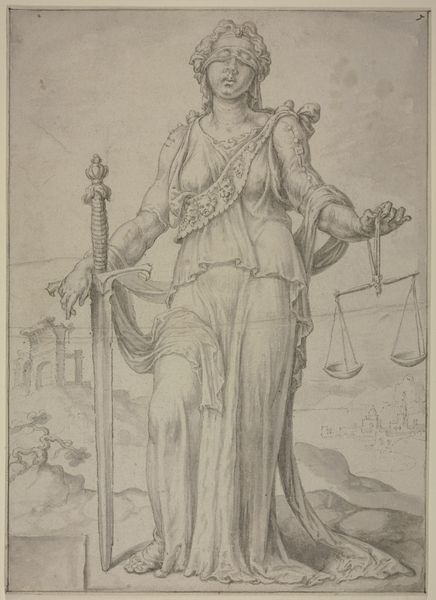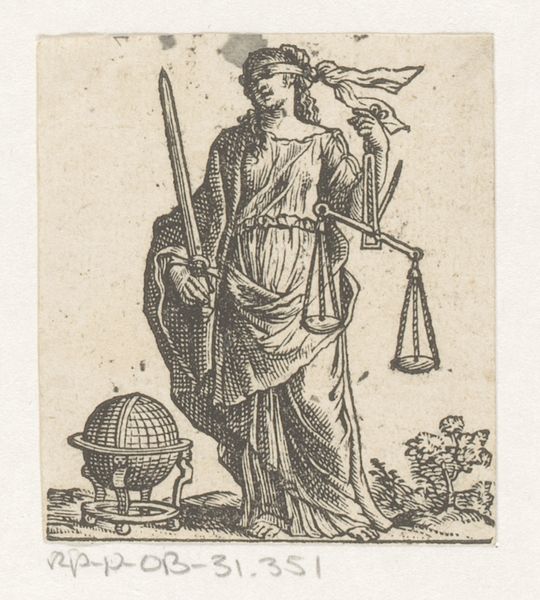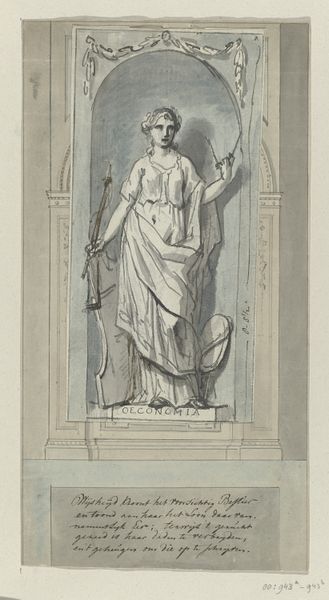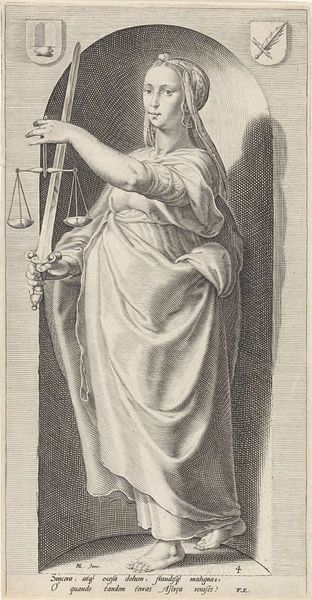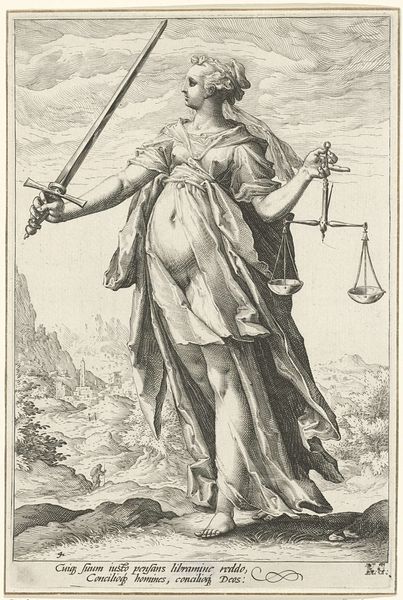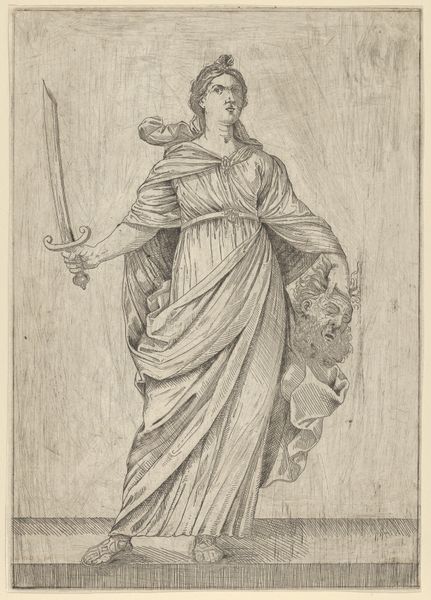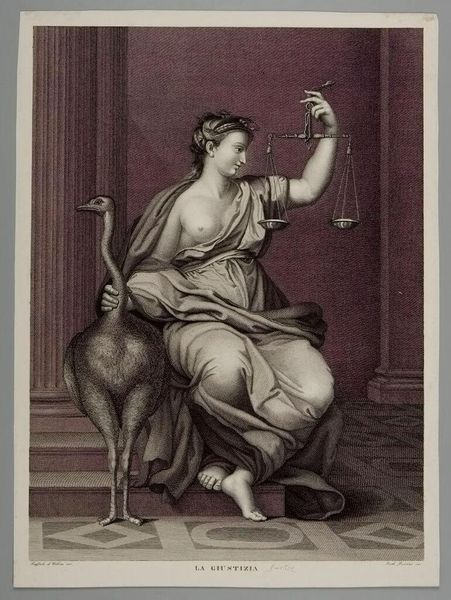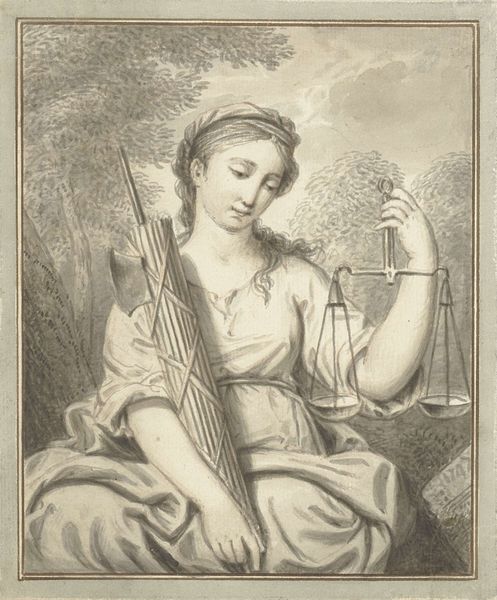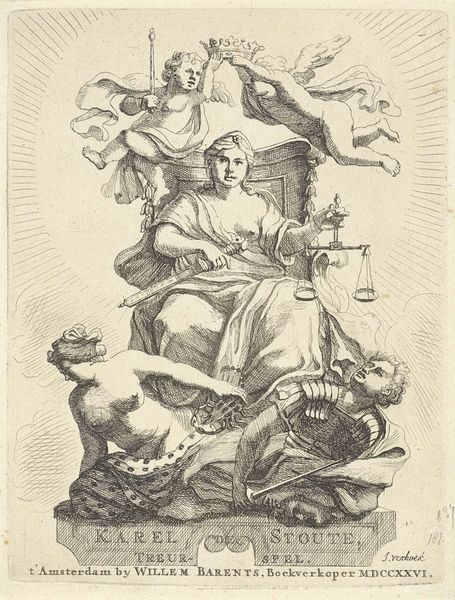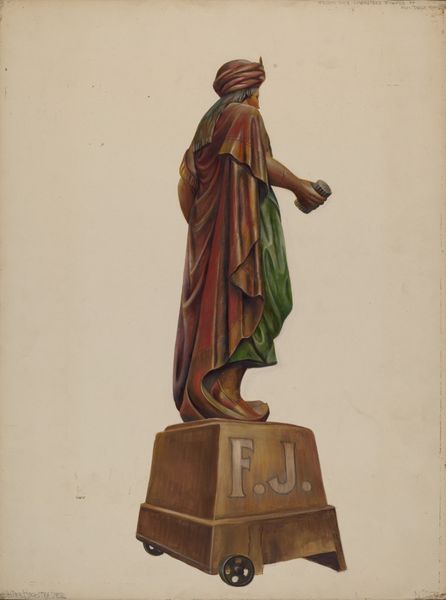
drawing, gouache, watercolor
#
drawing
#
allegory
#
gouache
#
figuration
#
watercolor
#
history-painting
#
academic-art
#
miniature
Dimensions: overall: 43.8 x 30.7 cm (17 1/4 x 12 1/16 in.)
Copyright: National Gallery of Art: CC0 1.0
Curator: Let's consider this compelling watercolor, gouache, and drawing on paper by Elmer R. Kottcamp. Entitled "Figure of Justice," it’s dated around 1938. What's your immediate take on this image? Editor: Stark. The limited palette emphasizes a somber mood, yet the statue’s meticulous execution is fascinating, especially its almost tangible sense of form. Curator: Indeed. Think about what "Justice" as an allegory would mean in the late 1930s. The shadow of World War II loomed, with fascism and social upheaval dominating headlines, so I think Kottcamp's depiction grapples with a very specific set of historical anxieties. It's impossible to ignore the potent symbolism during this interwar period. Editor: You're right, of course. I'm drawn to the artist's precise control of line and value to suggest depth, especially in the drapery. He creates the illusion of carved stone. The slightly unbalanced composition seems to mirror Justice’s struggle for equilibrium in chaotic times. Note also how it is labeled as being a miniature work, suggesting its possible origin for a larger piece. Curator: But, is that visual order enough to fully contain the social turbulence? Her blindfold—usually symbolic of impartiality—appears, dare I say, almost menacing. We must reflect on the history of blind faith and unquestioning adherence to power during the rise of authoritarian regimes. Even Justice, in a sense, needs to be held accountable. What ideological power dynamics were present at that moment? Editor: From a purely formal standpoint, look at the contrast between the fluid watercolor washes and the precise linework used to render details. I believe the figure’s three-dimensionality stands apart through subtle modulation of light and shadow. Curator: The art itself provides insight, no? The medium can be seen as speaking to social power, even the scales are more ornamental and do not portray equilibrium. Kottcamp makes no statements about that. It becomes more symbolic, a reflection of societal anxieties during a tumultuous period. Editor: The balance between light and shade really emphasizes form, and invites further formal inquiry. Curator: This look at Kottcamp’s work pushes us to understand the deep-seated tensions bubbling beneath the surface during a period of great global uncertainty. Editor: I can appreciate how the rendering underscores Justice's visual tension, both aesthetically and culturally.
Comments
No comments
Be the first to comment and join the conversation on the ultimate creative platform.

